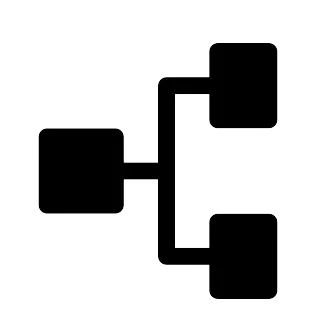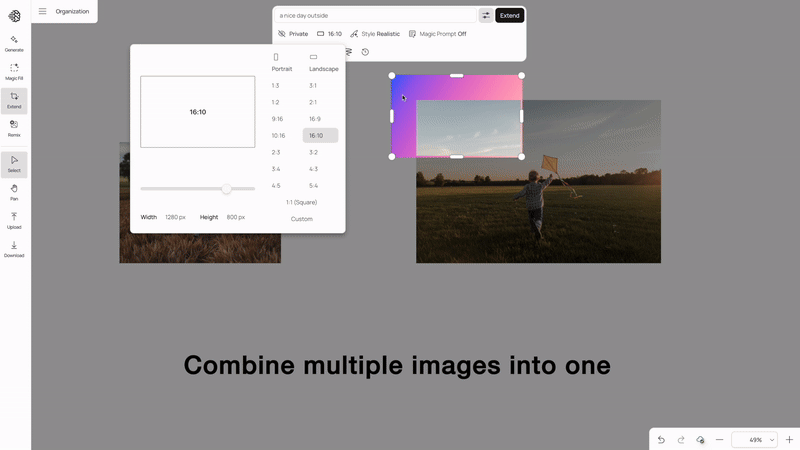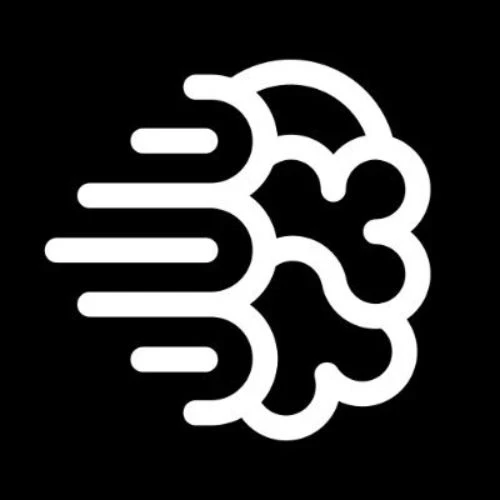True power of AI lies in using it parallely, so why limit it to buttons and columns?
Overview
What if you could play with AI in an infinite canvas? Outside the bounds of GUI, this AI-UX pattern uses AI accelerate the user in a 2D space. The user’s intention when using this pattern would be escape the limits set by devices and replicate the physical environment tasks digitally.
User intent
Spatial exploration
Macro trend
Agentic
Product teams have started to realize — to use AI to its full potential, it need not be used linearly, like we humans are used to when doing tasks. There doesn’t have to be a step 1, step 2, … etc. You can create a linear process, hand it off to AI and then run multiple linear processes parallelly.
The real power of AI is bulk, but we’re used to linear.
And that’s where the traditional UI fails. Well, sort of.
Traditional page-based UI doesn’t work when you’re trying to multitask. Or when you’re trying to look over or control parallel processes. The experience should be able to provide the flexibility of getting a bird’s eye view, hopping between processes quickly, and diving deep into one of them for further analysis, with the ability to zoom out again.
Anything come to mind? Infinite canvas.
Examples
Replicating the real world in a digital setting; being able to group and combine pieces spatially.
How are products moving towards infinite canvas?
1. Conversational apps
While ChatGPT, Claude and other conversational UX are powerful and used by millions, it doesn’t always capture how humans think (non-linearly). Sometimes, I just want to start a new thread mid-conversation or view different possibilities from one point and then select the direction of the conversation. Current chat interfaces are limited. How does an infinite canvas help?
Note — All hyperlinks below contain a demo video of that product. I got you.
Subform’s non-linear exploration of conversation is aligned to how we connect dots and ideas. *that linking-string animation Oooo*

Screenshot of Subform’s UX / Source: Aiverse
Isn’t research also non-linear? Heuristica’s trying to achieve just that by providing a lot of options (and i mean a lot!) to research in ALL possible directions.

Screenshot of Heuristica’s UX / Source: Heuristica demo
2. Creative tools
This one might be an obvious application. Creativity for sure cannot be contained in grid, boxes and buttons. So shouldn’t our tools allow us to “explore”, as we do in real world? Create, combine, and be spatially creative.
From using the power of AI in a discord channel (initial days of Midjourney) to today, it’s been a wild upgrade.
Visual Electric allowing creatives to explore without any bounds. Multiple functions to apply to an image, and an infinite canvas to not limit the possibilities.

Screenshot of the Visual Electric’s UX / Source: Aiverse
Concept by Adobe is the closest a product has come to capturing the true essence of remixing. It’s literally as easy as playing with clay, drag & drop an image as style or composition and voila.

Interaction of dropping a photo in Concept / Before / Source: Aiverse

Interaction of dropping a photo in Concept / After / Source: Aiverse
Ideoform is another great example. You can combine images by creating an overlaying layer and merging them together (with a prompt if required).

Ideoform’s remixing images / Before / Source: Aiverse

Ideoform’s remixing images / After / Source: Aiverse
3. Enterprise products
You know you’re lagging behind if big MNCs have also started implementing the user experience right? While the exact concept of infinite canvas hasn’t made it into their product lines, their implementation is quite close.
What do enterprises like?
Dashboards.
How do you implement AI x Dashboards x Infinite Canvas?
Widgets.
Flexible enough to show any data in any visual,
fixed enough to show them in a bento grid.
Meter’s generative UI hybrid approach is actually very interesting. Using a familiar conversational style for the user to create anything with AI, and then allowing them to drag & drop the output as widgets on an infinite canvas. Genius?

Meter’s conversational (left side), infinite canvas (right side) and drag/drop functionality / Source: Aiverse
Salesforce’s latest lighting canvas is as creative as an enterprise may get? I absolutely loved the implementation — really powerful and flexible.

Salesforce bento dashboard / Source: Salesforce blogs

Salesforce bento dashboard / loading state / Source: Salesforce blogs
4. Software creation
I believe this to be the next space where infinite canvas will make its mark. Imagine being able to create software as easily as playing LEGO in a digital space.
Devin’s quad-grid based approach gave us a glimpse of what the future of software building would look like; controlling multiple processes parallelly and getting an overview at all times.

Devin’s AI software engineer quad-grid UX / Source — Linkedin
However, there’s still another step to be taken. Tldraw Computer is a venture in that direction. Being able to create software like diagrams, and visually knowing what the flow of a function is or where something breaks.

Creating apps in Tldraw computer like diagrams / Source: Tldraw Computer

"I've gotten a ton of value out of aiverse over the last year!"
Dave Brown, Head of AI/ML at Amazon

Unlock this pattern
instantly with PRO
Access the entire Pattern Library
Access all upcoming Checklists
Access all upcoming Case studies
Get on-demand AI insights for your UX challenges
Curated by















